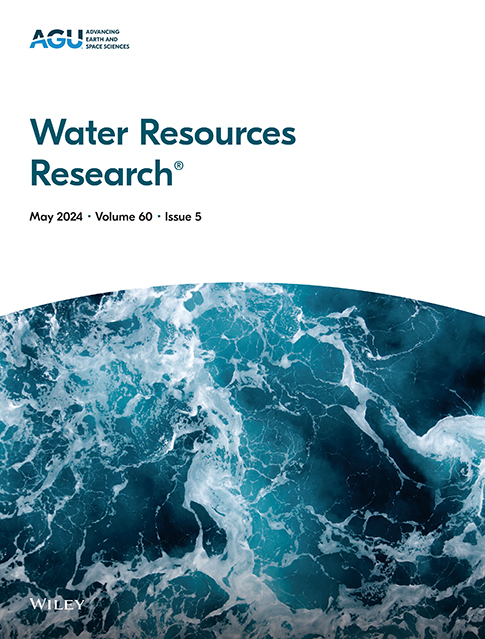将测深站的深度测量数据与图像档案相结合,实现基于光谱的河流水深遥感技术
IF 4.6
1区 地球科学
Q2 ENVIRONMENTAL SCIENCES
引用次数: 0
摘要
遥感技术是绘制河流水深测量图的有效工具,但由于需要直接测量来校准由图像得出的深度估计值,因此阻碍了这一方法的更广泛应用。规避专门用于校准的实地测量的方法之一是利用现有数据。在本研究中,我们介绍了一个利用测深记录和图像数据库(BaMGRID)进行测深绘图的框架。该工作流程包括检索在测量站实地考察期间进行的深度测量,下载存档的多光谱图像,然后将这两个数据集结合起来,建立深度与反射率之间的关系。我们开发了一个处理链,包括使用应用程序接口获取实地考察期间的深度测量数据和以测站为中心的图像,然后通过针对小样本量修改的最优波段比分析 (OBRA) 算法将深度与反射率联系起来。将这一工作流程应用于两个流域内的选定水文站表明,从多光谱卫星图像中进行深度检索的准确性很高,但在特定地点,不同图像的结果各不相同。在其中一个流域,高分辨率航空摄影对测深绘图的帮助较小。在我们评估的深度检索性能的四个预测因子(深度的平均值和标准偏差、宽度和水透明度指数)中,只有宽度与 OBRA R2 一直存在显著相关性(p < 0.026)。目前,BaMGRID 最适合用于逐点分析,以支持河段尺度的实际应用;连续、全流域的河流水深测绘还需要更多的研究。本文章由计算机程序翻译,如有差异,请以英文原文为准。
Integrating Depth Measurements From Gaging Stations With Image Archives for Spectrally Based Remote Sensing of River Bathymetry
Remote sensing can be an effective tool for mapping river bathymetry, but the need for direct measurements to calibrate image-derived depth estimates impedes broader application of this approach. One way to circumvent the need for field campaigns dedicated to calibration is to capitalize upon existing data. In this study, we introduce a framework for Bathymetric Mapping using Gage Records and Image Databases (BaMGRID). This workflow involves retrieving depth measurements made during gaging station site visits, downloading archived multispectral images, and then combining these two data sets to establish a relationship between depth and reflectance. We developed a processing chain that involves using application programming interfaces to obtain both depth measurements made during site visits and images centered on the gage and then linking depth to reflectance via an optimal band ratio analysis (OBRA) algorithm modified for small sample sizes. Applying this workflow to selected gages within two river basins indicated that depth retrieval from multispectral satellite images could be highly accurate, but with variable results from one image to the next at a given site. High resolution aerial photography was less conducive to bathymetric mapping in one of the basin considered. Of the four predictors of depth retrieval performance we evaluated (mean and standard deviation of depth, width, and an index of water clarity), only width was consistently significantly correlated with OBRA R2 (p < 0.026). Currently, BaMGRID is best-suited for site-by-site analysis to support practical applications at the reach scale; continuous, basin-wide mapping of river bathymetry will require additional research.
求助全文
通过发布文献求助,成功后即可免费获取论文全文。
去求助
来源期刊

Water Resources Research
环境科学-湖沼学
CiteScore
8.80
自引率
13.00%
发文量
599
审稿时长
3.5 months
期刊介绍:
Water Resources Research (WRR) is an interdisciplinary journal that focuses on hydrology and water resources. It publishes original research in the natural and social sciences of water. It emphasizes the role of water in the Earth system, including physical, chemical, biological, and ecological processes in water resources research and management, including social, policy, and public health implications. It encompasses observational, experimental, theoretical, analytical, numerical, and data-driven approaches that advance the science of water and its management. Submissions are evaluated for their novelty, accuracy, significance, and broader implications of the findings.
 求助内容:
求助内容: 应助结果提醒方式:
应助结果提醒方式:


